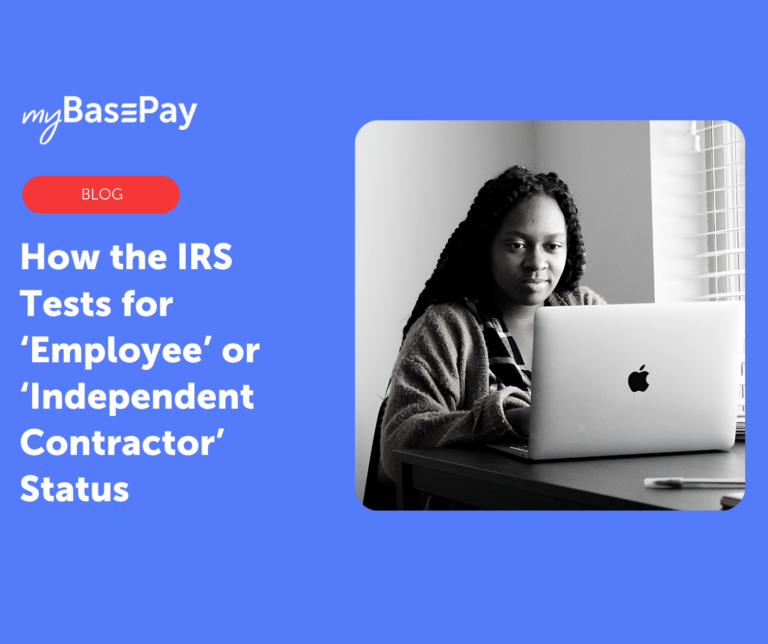5 Reasons Contingent Labor Is the Future of the Working World
As we enter into 2023, let’s take a moment to assess what this past year had to offer.
With great advancements in technology, communication in the business world has become more diverse than ever. Organizations and employees have finally settled into the remote work model. This convenience of telecommuting has led to a rise in non-permanent workers, including freelancers, contractors, and part-time remote employees.
But these trends won’t end in 2022. According to reports, the use of temporary and remote workers will only increase with the new year, and U.S. talent acquisition is going to rely more heavily on outsourcing workers from other regions.
Though the U.S. workforce is ever-changing, contingent labor doesn’t seem to be going anywhere anytime soon. After experiencing massive shifts during and after the pandemic, companies are more hesitant to hire full-time in-office employees, and rather, inclined to hire on an as-needed basis. As the contingent workforce becomes the “new norm,” let’s look at five reasons it might be time for your company to start acclimating.
1. Addresses the Skill Shortage
One of the biggest issues that plague today’s workforce is widespread skill deficiency. For modern executives, attracting and retaining highly skilled talent is already a major stress point—but doing so during a skilled labor shortage only adds to the burden.
According to the Society for Human Resource Management, some 83% of companies are struggling to find workers with the right skill sets. Another study shows that this problem isn’t going anywhere, with organizations in nearly every state predicted to face qualified employee shortages.
That’s why many companies are turning toward non-employee labor, which can provide a specialized set of skills on a contractual basis. This means businesses can leverage temporary talent for organizational-critical projects.
Whether it be freelancers, consultants, or contractors, experienced contingent workers can help fill those skill gaps in your company more quickly and affordably than a full-time employee.
Plus, thanks to the pandemic, the pool of skilled contingent workers to draw from is only growing. The U.S. contingent workforce has grown more than 50% since before the global COVID-19 outbreak, specifically addressing needs in the IT, healthcare, and professional service industries.
Today, nearly 30% of an average company’s workforce is comprised of contingent workers, and another 80% say they hope to bring on more contractors to fill ongoing internal skill gaps.
2. Offers Greater Flexibility
The modern workforce is anything but stagnant; needs change, trends come and go, and occasionally, a global pandemic will break out, turning everything on its head.
However big or small your company, having a flexible workforce is crucial to surviving the business world’s ever-changing circumstances. Thanks to the temporary, short-term nature of contingent workers, you don’t have to worry about being tied down to an inflexible agreement.
When a crisis arises or there’s a sudden influx of work, you can turn to contingent talent to meet your dynamic demands. Then, when the period of cooperation is complete, so are your responsibilities to the worker.
While this offers several benefits for companies, it also allows the workers themselves to better manage their work-life balance. And when workers can achieve greater balance in these areas, they’re more likely to be productive, loyal, and happy at their job and with their employers.
3. More Cost-Effective Hiring Practice
Perhaps the biggest reason companies are turning to contingent talent is due to its faster and more cost-effective hiring process. According to Zippia, the average cost per U.S. hire is $4,700.
Depending on the position and size of the company, it takes up to 40 days to fully integrate a new member into a company, demanding over 15% of HR expenses—such as benefits management, tax accounting, overhead costs management, and payroll processing—be allocated toward these recruitment efforts.
Combine those statistics with the current talent shortage, and it becomes clear that most organizations simply don’t have the time or money to hire new employees. However, non-permanent workers can be hired and onboarded faster and lesser red tape to endure.
In addition to this fast-paced hiring process, the cost to recruit contingent workers is significantly more economical. Since they’re committed to a position for a temporary period, these workers require no pay raise. Plus, they execute the same duties as a core employee, but at a lower rate.
Contingent workers aren’t considered full-time salaried workers, which also means they warrant no additional benefits from the hiring company. And the financial perks don’t end there. Using consultants, contractors, or freelancers rids your company of paying other employee-associated expenses, including insurance, paid leave, and pension contributions.
4. Fresh Perspectives
Whether you’ve recruited a contingent worker for a few days or a few months, adding a fresh set of skills to your company can give you a leg up on the competition.
Maybe your company has been struggling in a particular area, or perhaps you’re facing difficulty overcoming a certain challenge. Bringing in a new non-permanent worker can help identify those issues and offer unique solutions to problems you might be too close to.
Even if you feel like your business doesn’t have any major problems to address, occasionally recruiting different contingent workers can offer other advantages, as you benefit from the vast knowledge, expertise, and perspectives of a diverse group of people.
5. Stays Agile In Uncertain Business Periods
The pandemic and looming recession have increased organizations’ awareness of workforce agility. When COVID-19 first hit, many executives were forced to let go of hundreds of valuable workers, resulting in millions of dollars in losses. To combat future economic fallouts, businesses are turning their focus to optimizing workforce flexibility—and contingent labor is delivering on all levels.
Due to the availability of remote, temporary talent, hundreds of organizations were able to stay afloat during the difficult times brought on by the pandemic. The resilience of this type of talent pool can expect to pave the way for future company successes.
With non-permanent workers, companies can more easily scale to address changing market demands. Especially when the unexpected happens, contingent workforces give businesses the freedom to make the best out of difficult situations.
An organization’s fluidity will become more crucial as time goes on. Developing the right recruitment strategies and hiring contingent labor now can ensure your business not only survives but thrives in a rapidly changing economy.
Author: Cesar Jimenez, myBasePay CEO
Cesar A. Jimenez is an entrepreneur, investor, and military veteran with over 25 years of staffing industry expertise successfully leading technology staffing organizations. His expertise in the IT industry allows him to use his experience as a thought leader for talent acquisition, staffing, IT, and recruitment technologies with a passion for contingent workforce solutions. Cesar has held various leadership roles for both a global staffing organization and technology solutions companies. This expertise has enabled him to develop alternative workforce models that provide the agility for organizations to be competitive in today’s marketplace. In his spare time, he enjoys spending time with hisfamily, working out, and coaching high school baseball players.






